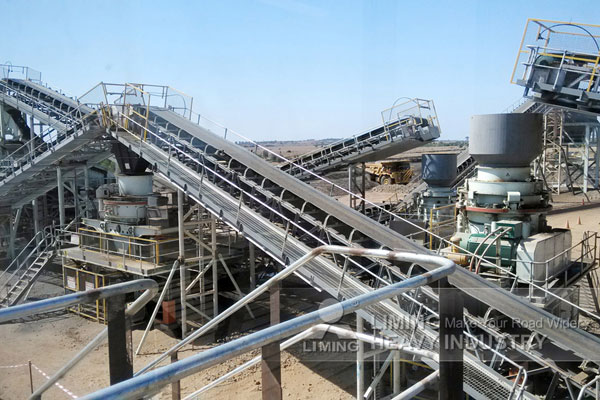River pebble stone crushers are designed to handle the unique hardness and abrasiveness of river pebbles, which makes them an ideal choice for creating fine sand and gravel for construction and landscaping. One of the most critical factors to consider when selecting a crusher for river pebbles is the feed size it can handle. The size of the feed material plays a crucial role in determining the crusher’s efficiency, output quality, and longevity. Crushers for river pebbles generally have a wide range of feed size capacities, making them suitable for different stages of processing.
For primary crushing, jaw crushers are often the preferred choice due to their ability to accept large feed sizes. River pebbles can be quite large when first extracted from riverbeds, often measuring up to several hundred millimeters in diameter. Jaw crushers are capable of handling feed sizes of up to 500 mm or more, which makes them ideal for the initial reduction of large river pebbles. Once the pebbles are reduced in size, they can be further processed by other types of crushers.

In secondary and tertiary crushing, cone crushers and impact crushers are commonly used. These machines are capable of processing river pebbles with feed sizes ranging from 30 mm to 200 mm, depending on the specific model and design. Cone crushers offer a more uniform size reduction and are highly efficient when it comes to handling harder materials like river pebbles. Impact crushers, on the other hand, are better suited for creating finer materials and can handle feed sizes within the same range.
When it comes to fine crushing or sand-making, vertical shaft impact (VSI) crushers are often utilized. These crushers are typically designed to handle feed sizes of less than 50 mm, making them ideal for converting smaller pebbles into sand. The VSI crushers are known for producing high-quality sand and have adjustable settings to achieve the desired size and texture of the final product. In river pebble sand-making processes, they are used after the pebbles have been reduced to a suitable size by previous crushers.
In conclusion, the choice of river pebble stone crusher and the maximum feed size it can handle will depend on the stage of crushing required. For large feed sizes in the primary stage, jaw crushers are most effective. For secondary and tertiary stages, cone and impact crushers can efficiently handle mid-range feed sizes, while VSI crushers excel in producing finer materials. Properly matching the crusher with the feed size ensures optimal performance, energy efficiency, and longevity of the equipment.
